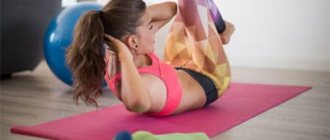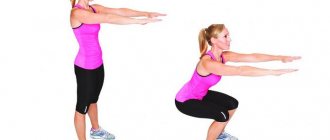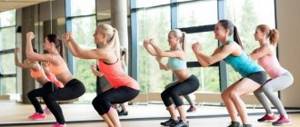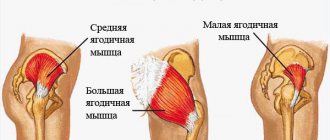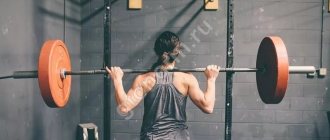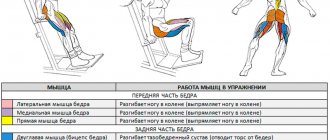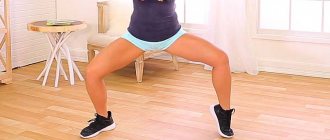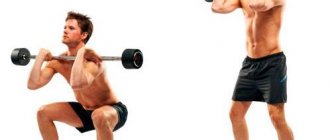Program description
There is an effective method to quickly and efficiently increase strength indicators. In coaching circles, it is called the ten-set method, and it is also known as German or German ten-by-ten training.
Super sets and tri sets allow you to perform more exercises in a short period of time. The rest-pause method allows you to use heavy weights, thereby stimulating high threshold muscle fibers, which allows you to increase strength. The bottom line of each method is that if you train intensively, at least for several weeks, the results will not be long in coming.
As I wrote earlier, trainers call this training the ten-set method, and since its roots come from Germany, I call it German Volume Training. As far as I remember, the program was invented in Germany in the mid-70s and was distributed by Rolf Feser, who was the national strength coach at the time.
In Germany, the 10 x 10 Set Method or program was used at the end of the season to help strength athletes lose weight. It was so effective that athletes were able to get into their desired shape in just 12 weeks!
The program works because it targets a specific muscle group, subjecting it to intensive volumetric training of a large number of repetitions (10 repetitions) in each set of one exercise, which is also 10. The body gets used to high, I would even say stressful, loads through muscle hypertrophy fibers
Tip #5: Set Neurological Overload (NOS)
Ben Pakulski: “Neurological overload training is what I do that helps me grow my muscles and break through plateaus. For the final set of a given exercise—usually for each exercise in a workout—I perform four consecutive drop set sets in 20% increments and try to do at least 5-6 reps with each weight. I find this to be a great way to overload the muscles as well as the nervous system to trigger adaptation to the stress.
An example of NOS would be dumbbell shoulder lateral raises. I prefer to do this exercise while seated because it removes one variable from the equation: cheating. My typical NOS set for dumbbell lateral raises looks like this: 30kg dumbbells for 6-8 reps, then 25kg for 6-8 reps, 18kg for 6-8 reps and finally 10kg for 10 reps.”
Ben Pakulski: Shoulder Workout
- Bent-over dumbbell raises – 5 sets of 12 reps *
- Seated dumbbell lateral raises – 5 sets of 8 reps *
- Machine overhead press – 5 sets of 10 reps
- Pec-Deck Raises – 4 sets of 10 reps
- Lateral abduction of the arm from the lower block - 3 sets of 15 repetitions
- Vertical barbell row (stretch) – 4 sets of 10 reps *
* Perform a NOS set (four drop sets where the weight is reduced by 20% each time) on the last set.
Workout Tip #1: Pakulski only trains his shoulders once a week because it is a strong part of his body that tends to outperform other muscle groups. When he trains delts, he uses a high training volume (that is, 26 total hikes as in the presented workout).
Training Tip #2: The first compound exercise comes third in the set. This pre-exhaustion of the delts ensures that the triceps do not fatigue prematurely.
Tip #2: Very Slow Reps
Dennis James: “When something isn't working or I hit a plateau during training, I always do very, very slow reps. What I mean by very slow is 5-10 seconds lifting the weight and 5-10 seconds lowering each rep, using 30-50% of the weight I normally use. And you don’t need to use this technique only in one exercise in training. You can apply this to each exercise. It will take a lot longer to complete a whole set, but I guarantee that one set will make up for 5-6 regular sets.
You can do slow repetitions for, say, a month, or one week at a time, and then return to doing regular repetitions. Performing repetitions at a very slow pace is much more intense, creates a greater load on the muscles, and the likelihood of injury is almost zero. And even if you train with lighter weights, it seems that you are working with quite heavy ones. Since you're doing the exercise slowly, you can feel like a couple of plates on the bar weigh as much as six, so I usually keep the rep range between 3 and 6. And I guarantee you that if you try this method, you'll get such a powerful pump, which you have never experienced."
Denisa James: triceps workout
- Arm extension on the upper block – 3 sets of 3-6 repetitions *
- French bench press – 3 sets of 3-6 reps *
- Arm extensions on the upper block with a reverse grip - 3 sets of 3-6 repetitions with each hand *
* Perform each repetition at a speed of 5-10 seconds on the concentric part of the range and 5-10 seconds on the eccentric part.
Workout Tip #1: The number of reps may vary slightly, but James says if you can do more than eight reps on any given set, increase the weight.
Workout Tip #2: When doing the French press, James recommends lowering the barbell toward your nose rather than behind your head or forehead.
Tip #1: High reps for big legs
Fouad Abiad: “The most important change in my career came in 2010 when I decided that the heavy weights I was training my legs with were mainly to satisfy my ego. Throughout this time, lagging quadriceps and hamstrings have always held me back. “Not big enough,” people said about my legs, or “not big enough.” So I decided to make some changes to my training.
Instead of lifting heavy weights for sets of 6-8 reps, as I did for the first 10 years of my career, I decided that 15-20 reps was the right path to muscle growth. Once I increased this range, I noticed that the leg muscles became denser and larger in volume. Now on the leg press I use weights that I can do at least 20 reps with, and on the hack squats I use a weight that I can do 10-12 reps with. I no longer do sets for my legs in the rep range of less than 10 reps; This is why my muscles just don’t grow.”
Fouad Abiad: leg workout
- Lying leg curls on a machine – 5 sets of 20-10 repetitions *
- Back squats – 5 sets of 20-10 reps *
- Leg press – 6 sets of 20 reps
- Romanian Deadlift – 4 sets of 10 reps
- Hack squats – 3 sets of 10 reps
*Increase the weight on each hike, starting with 20 reps with the lightest weight and ending with 10 reps with the heaviest weight.
Workout Tip #1: Performing leg curls first during a workout allows him to use maximum weight and pre-fatigues the hamstrings.
Workout Tip #2: Abiad does fewer reps on hack squats because it happens late in the workout and his legs are already fairly fatigued from leg curls, squats, and leg presses.
Beginner/Advanced Program - Phase 2
The training cycle is 5 days. Total duration 3 weeks.
| Day 4 | ||||
| Arms and Deltas | ||||
| Part A | Approaches | Repetitions | Pace | Rest |
| Triceps dips | 10 | 10 | 4 0 2 0 | 90 sec |
| "Hammers" for biceps on a bench with a positive incline | 10 | 10 | 4 0 2 0 | 90 sec |
| Part B | Approaches | Repetitions | Pace | Rest |
| Dumbbell swings for the rear delts while lying on your stomach on a bench with a positive inclination (can be replaced with dumbbell swings while sitting on the rear delts in an incline position) | 3 | 15-20 | 2 0 x 0 | 60 sec |
| Swing dumbbells from side to side while seated | 3 | 15-20 | 2 0 x 0 | 60 sec |
After six of these 5-day cycles, I recommend moving on to the next 3-week phase, where the repetitions will be between 6-8 for 4-6 sets per body part in a 5-day cycle. After 3 weeks, you can increase to 10 sets with 6 repetitions for each set.
| Day 2 | ||||
| Legs and Abs | ||||
| Part A | Approaches | Repetitions | Pace | Rest |
| Deadlift | 10 | 6 | 5 0 1 0 | 90 sec |
| Leg bending while sitting in a machine | 10 | 6 | 5 0 1 0 | 90 sec |
| Part B | Approaches | Repetitions | Pace | Rest |
| Lateral crunches on the floor with knees raised | 3 | 6 | 3 0 1 0 | 60 sec |
| Standing calf raise | 3 | 6 | 3 0 1 0 | 60 sec |
